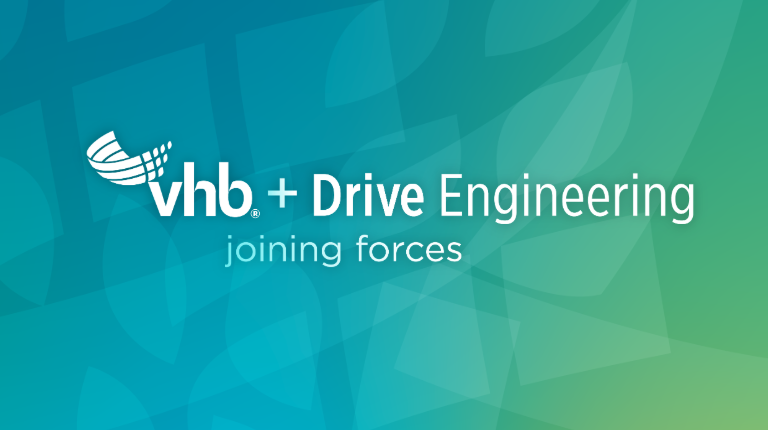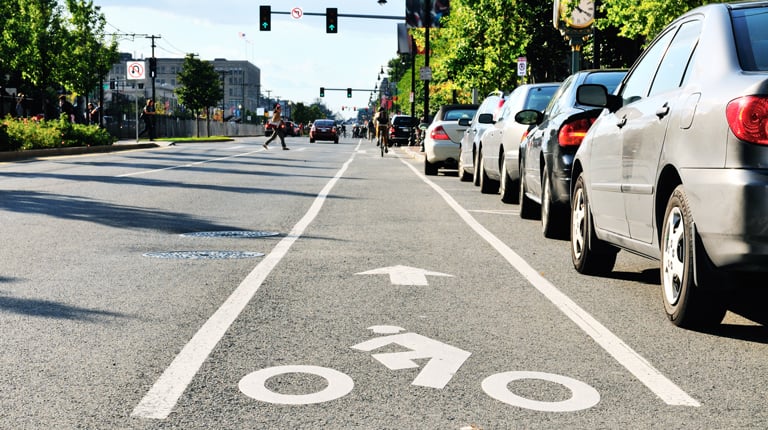
Parking challenges are a familiar reality for universities experiencing growth. As these institutions expand—adding new buildings, welcoming more students, and launching additional programs—the demand for parking naturally surges. While the instinctive solution might be to build more parking lots, other approaches may ultimately be more beneficial.
Seth Wright, Parking Planning and Operations Lead at VHB, advocates for a strategic, data-informed approach to parking that improves efficiency, enhances mobility, and supports sustainability goals. We discussed with Seth how institutions can better utilize existing parking spaces and integrate management practices into their campus growth strategies.
VHB: Seth, when institutions come to you with parking concerns, what kinds of challenges are they typically facing?
Seth: The first thing we hear is almost always, “We don’t have enough parking.” But, honestly, nine times out of 10, it’s not a supply issue—it’s a usage issue. We see campuses where certain lots are constantly full while others sit half empty. This usually boils down to things like poor signage, bad visibility, inconvenient access, or circulation patterns that just don’t line up with how people actually move around campus.
And parking isn’t just about finding a spot—it affects everything from traffic flow and safety to the overall campus experience. If cars are backing up near classrooms or drop-off zones are a mess, that creates real congestion and safety problems for students, staff, and visitors.
VHB: Can you give an example of how these parking problems show up in real life?
Seth: Imagine a campus that has grown organically over time. With each new addition, a few extra parking spaces may be added and, instead of having a coherent plan, the result is a patchwork system where some lots are only accessible from one side of campus while others with outdated layouts don’t flow well with current traffic patterns.
That kind of setup creates real challenges, not just for drivers trying to find a spot, but also for people walking, delivery trucks trying to get where they need to go, and even emergency vehicles that need quick access. So, it’s more than just an inconvenience. It can hinder how well the entire campus functions. It’s important to examine how the whole system works together.
VHB: So, what does a smarter approach to parking look like in practice?
Seth: It starts with data—solid, actionable data. We conduct in-depth utilization studies that dig into how parking is actually being used: who’s parking where, when, and why. We analyze traffic flow, peak hours, shuttle routes, pedestrian movement, bike networks—you name it.
Once we have a clear picture, we can come up with solutions that fit the documented habits and needs of the campus community. That might mean redistributing demand, modifying parking policies, or improving the accessibility and visibility of underused spaces. Sometimes it’s as simple as better signage or a shuttle adjustment. Other times, we recommend re-striping lots, redesigning circulation routes, or implementing shared-use models. But the key is always to start with existing resources and build from there.
VHB: That sounds really practical. How does technology fit into that picture?
Seth: Technology is a big help in making parking systems more efficient and intuitive. Tools like real-time occupancy tracking, mobile apps, and automated payment systems can make a huge difference for both the university and people parking. They cut down on the time drivers spend looking for a space and make paying simpler, which can really reduce frustration.
We're also starting to see things like predictive analytics, where we use historical data to forecast parking demand and proactively direct people toward open spots before they even arrive. This could be through suggestions within a parking app or digital signs that change in real-time.
VHB: With regard to leadership, what kind of mindset shift do you think is necessary to move toward these smarter solutions?
Seth: Leaders need to start thinking of parking as part of the bigger campus system. It’s tied to academic access, student experience, operations, and sustainability. Too often, it’s treated as an isolated issue. That leads to short-term solutions that don’t hold up over time—and typically come with high price tags.
Instead, we want institutions to think holistically. When you take a step back and ask, “How can parking support our broader goals?” or “How can parking adapt as the campus grows?” that’s when the smart, lasting strategies come into play. You start designing parking as a powerful tool to improve connections, enhance mobility, and help the university function better for everyone.
Want to help create smarter, more connected campuses? Visit VHB's Career page to explore job opportunities and become part of innovative projects that reshape campus logistics.


